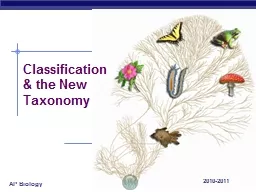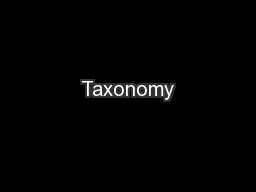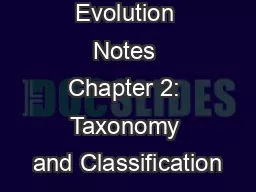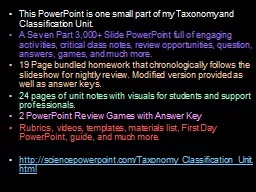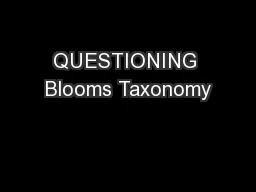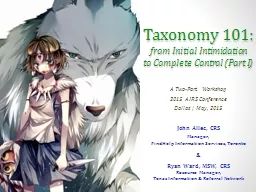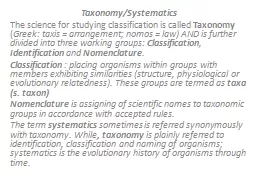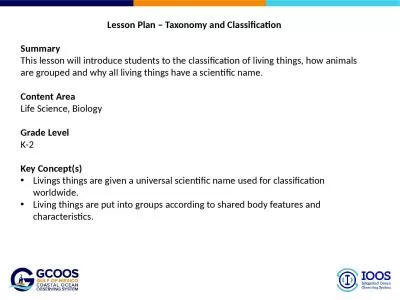PPT-2010-2011 Classification & the New Taxonomy
Author : alida-meadow | Published Date : 2018-10-23
Organisms classified from most general group domain down to most specific species domain kingdom phylum class order family genus species Finding commonality in
Presentation Embed Code
Download Presentation
Download Presentation The PPT/PDF document "2010-2011 Classification & the New T..." is the property of its rightful owner. Permission is granted to download and print the materials on this website for personal, non-commercial use only, and to display it on your personal computer provided you do not modify the materials and that you retain all copyright notices contained in the materials. By downloading content from our website, you accept the terms of this agreement.
2010-2011 Classification & the New Taxonomy: Transcript
Download Rules Of Document
"2010-2011 Classification & the New Taxonomy"The content belongs to its owner. You may download and print it for personal use, without modification, and keep all copyright notices. By downloading, you agree to these terms.
Related Documents

